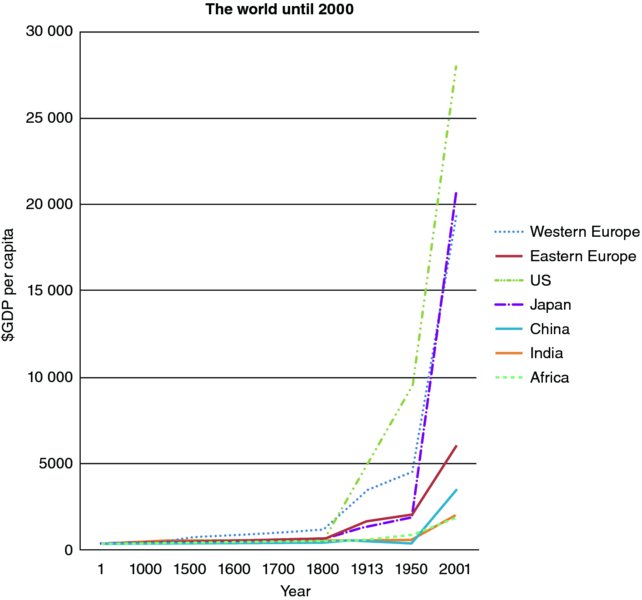2 Economic Growth
A nation is not made wealthy by the childish accumulation of shiny metals, but is enriched by the economic prosperity of its people.
Adam Smith1
Economic growth is the litmus test of modern national and global success. Lack of growth can topple governments, bankrupt states, jeopardise currencies, cause wars and create long-term structural and societal problems that create hardship for millions. Understanding how growth occurs, what jeopardises it, but, perhaps more importantly, how to sustain it, has become the Holy Grail of politicians. The universal, standard measure of a country's economic growth is its gross domestic product (GDP). It is vital to understand what components make up this measure and how they impact on wider society, to be able to analyse and understand their impact on financial markets.
ECONOMIC GROWTH THROUGH THE AGES
Figure 2.1 shows the world economy from 1 to 2008. The author estimates data for year 1 and then for year 1000, then 500 years later, and, after that, at 100-year intervals until 1800 when it becomes annual. Prior to 1500, figures are based on population trends, as there was very little productivity difference. This is not to say there was no divergence – there was – as better agricultural techniques, better access to land and water and so forth started to make a difference in some parts of the world, from around 1000.

Get Trading Economics: A Guide to Economic Statistics for Practitioners and Students now with the O’Reilly learning platform.
O’Reilly members experience books, live events, courses curated by job role, and more from O’Reilly and nearly 200 top publishers.

